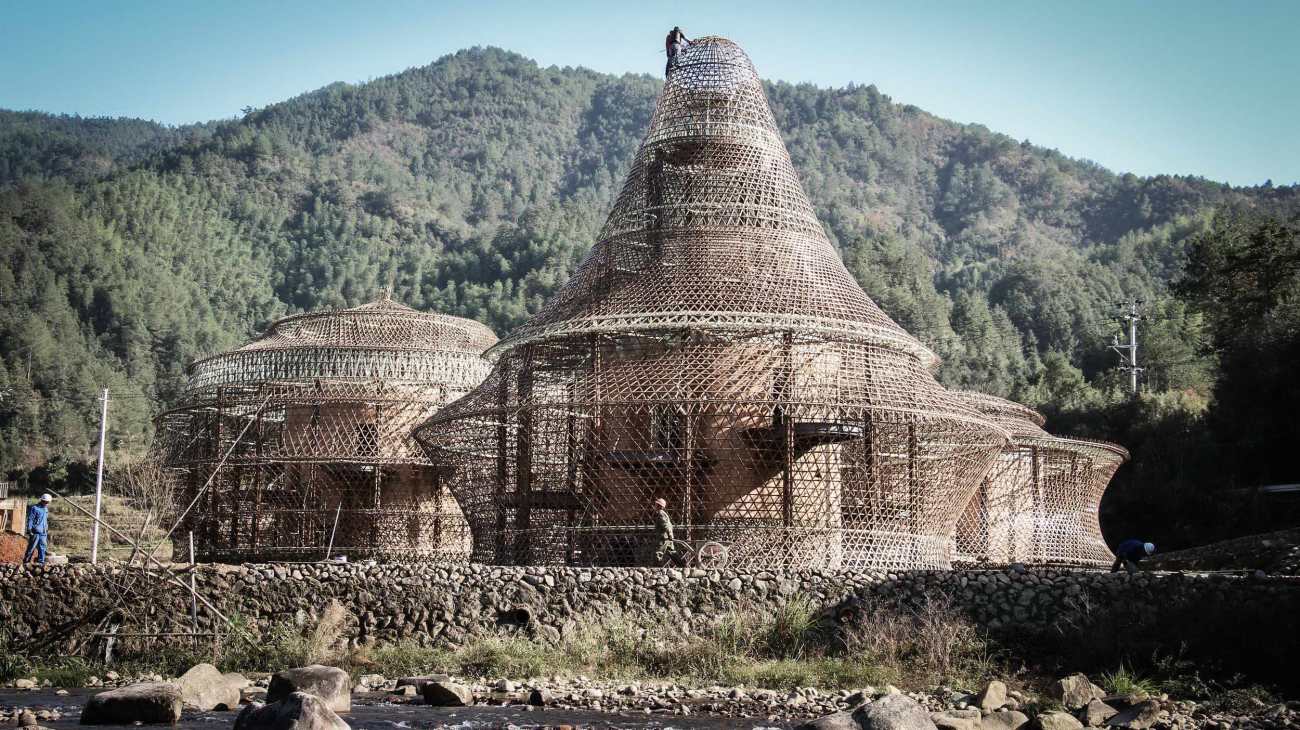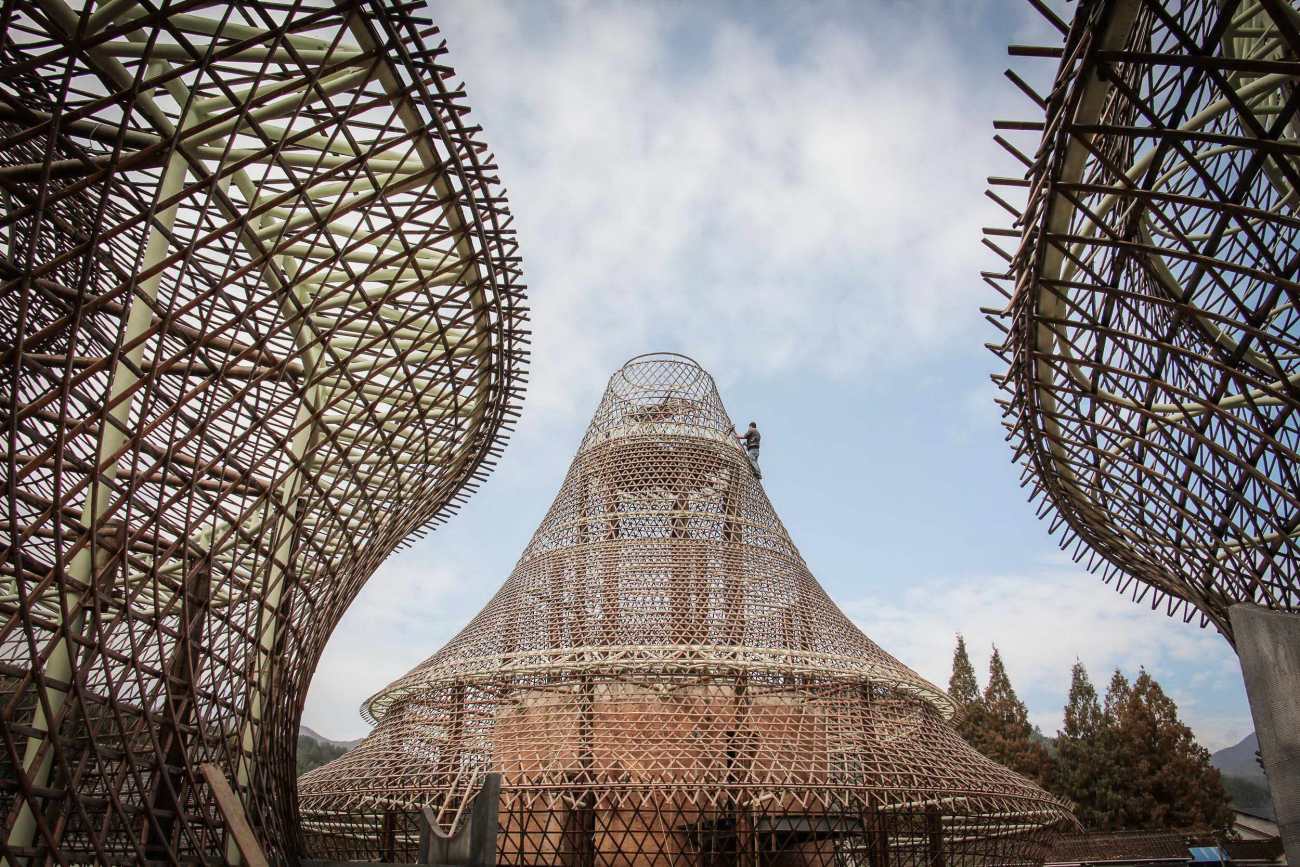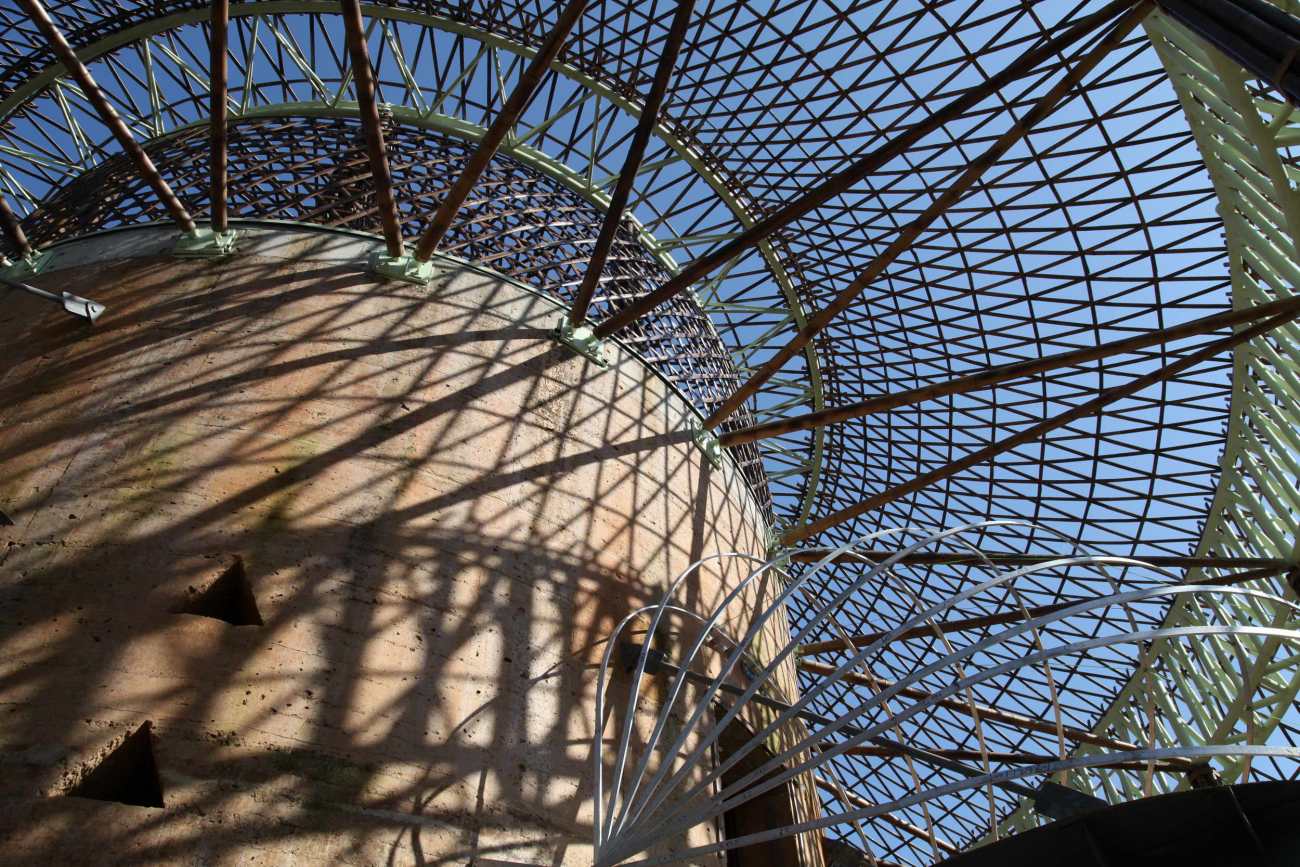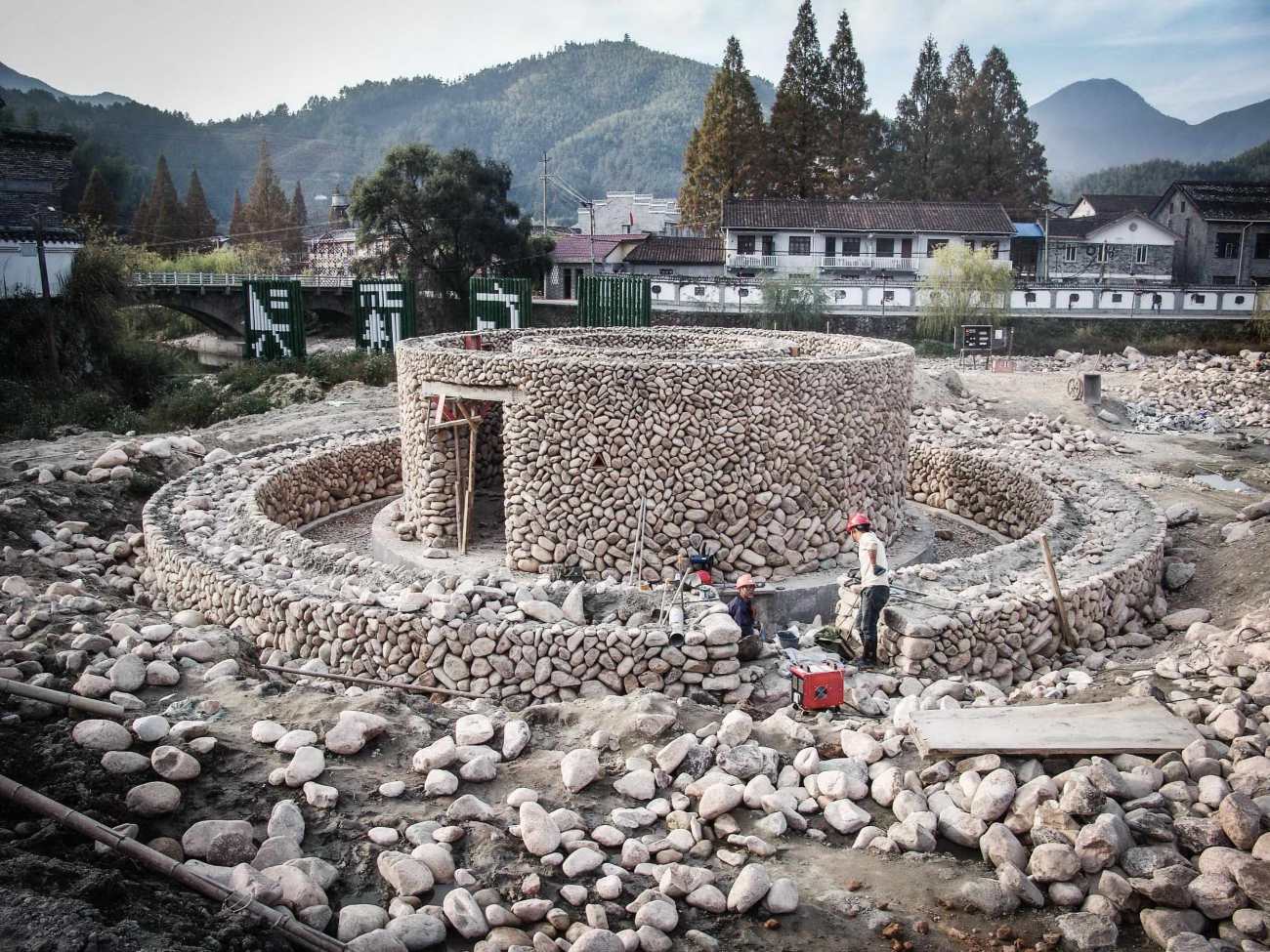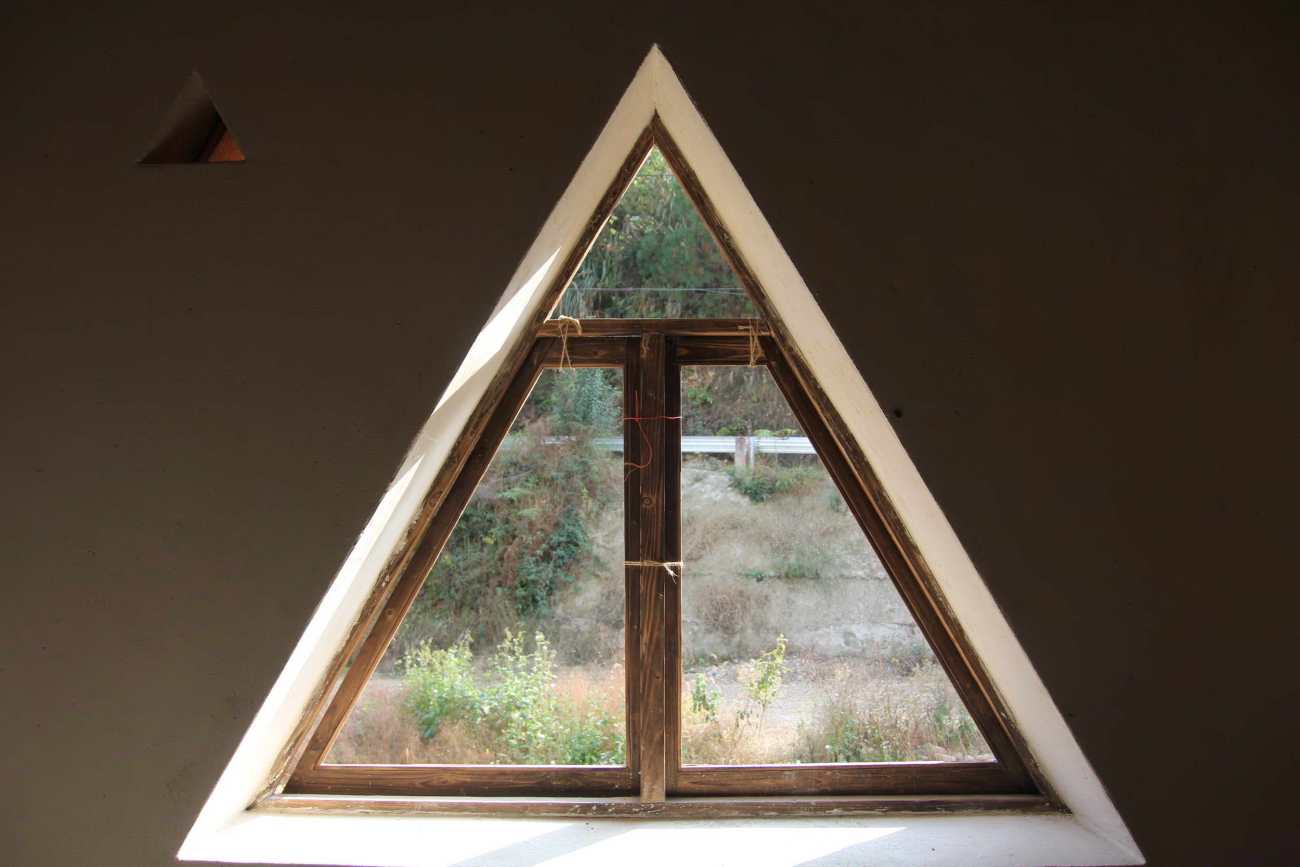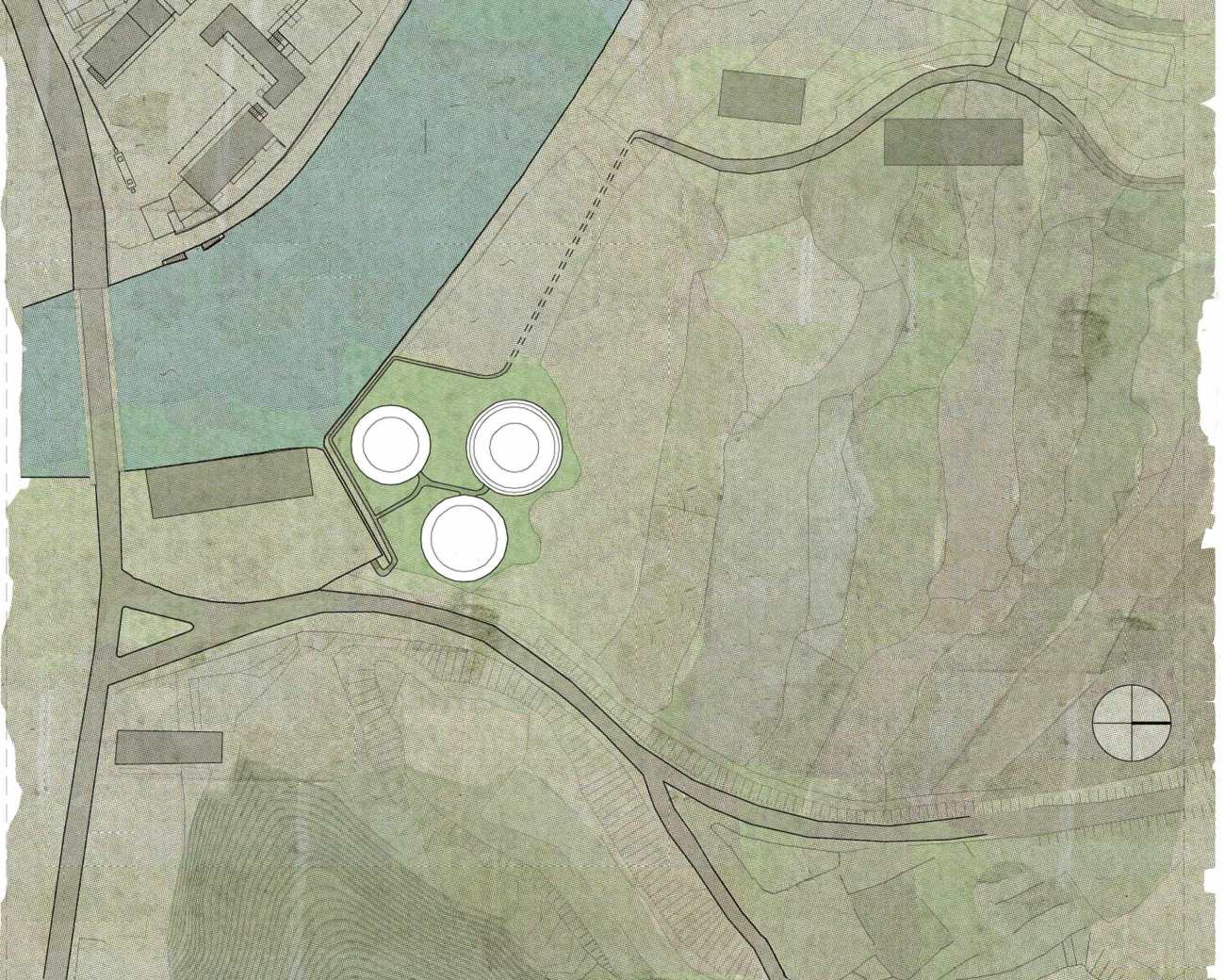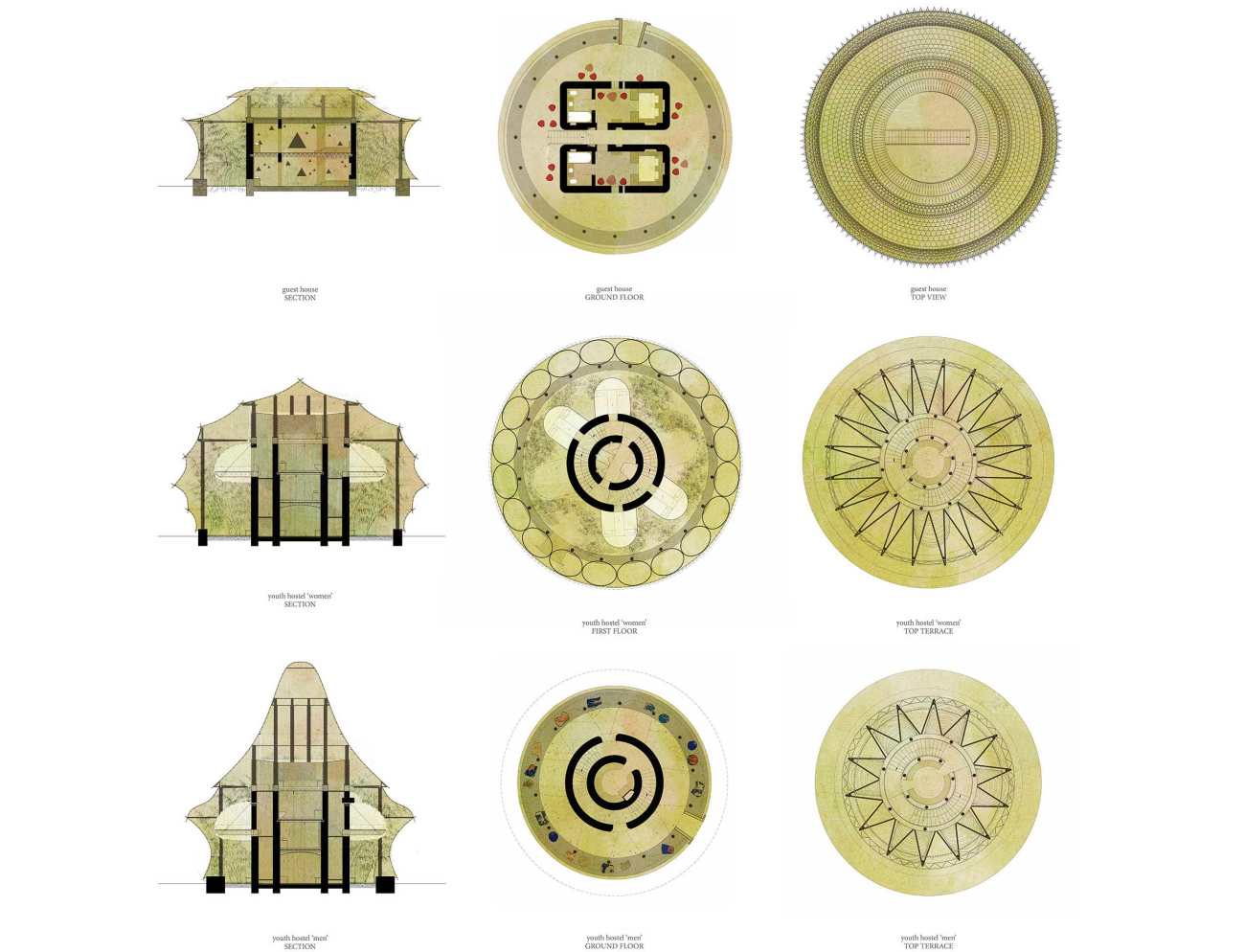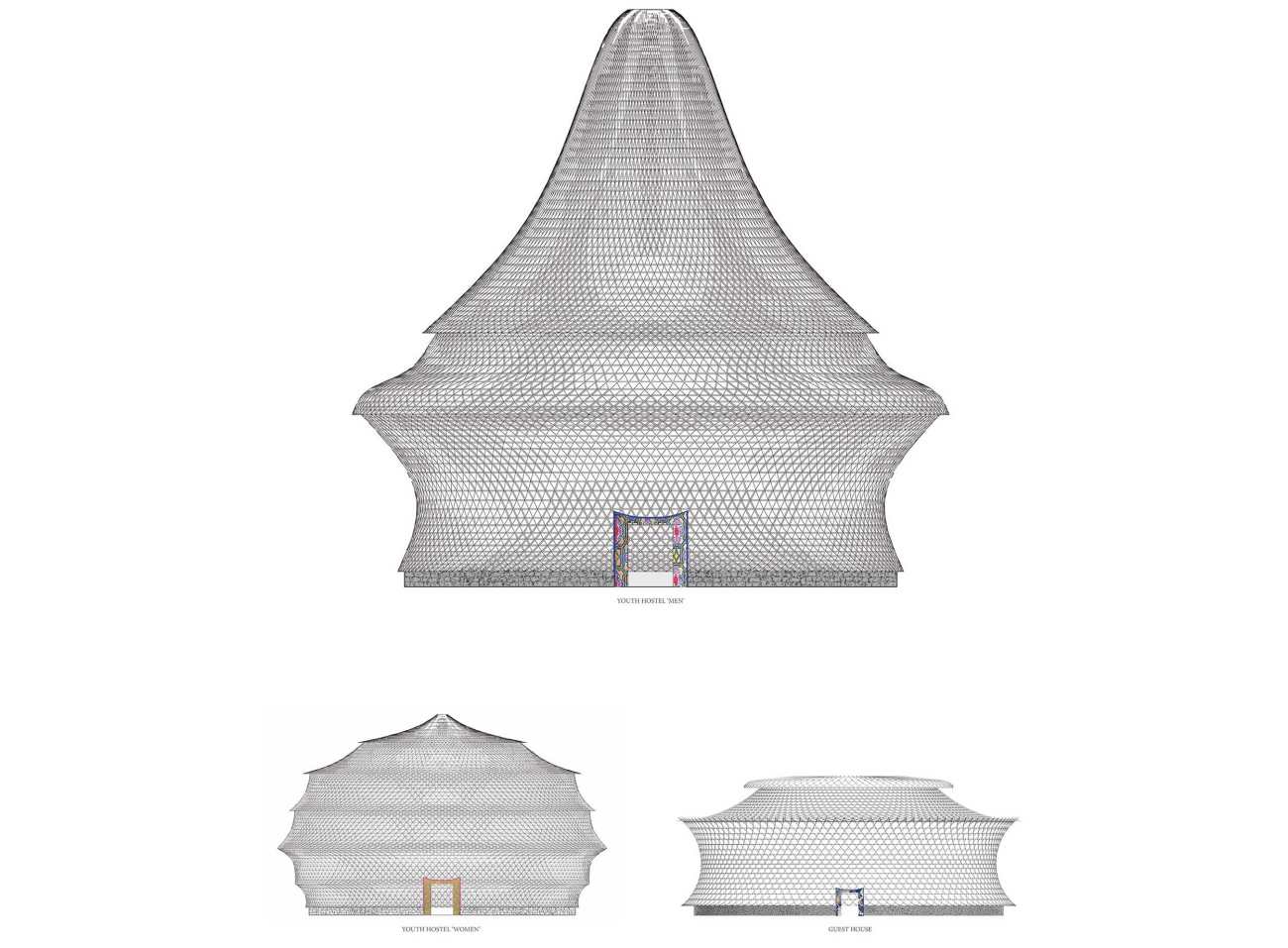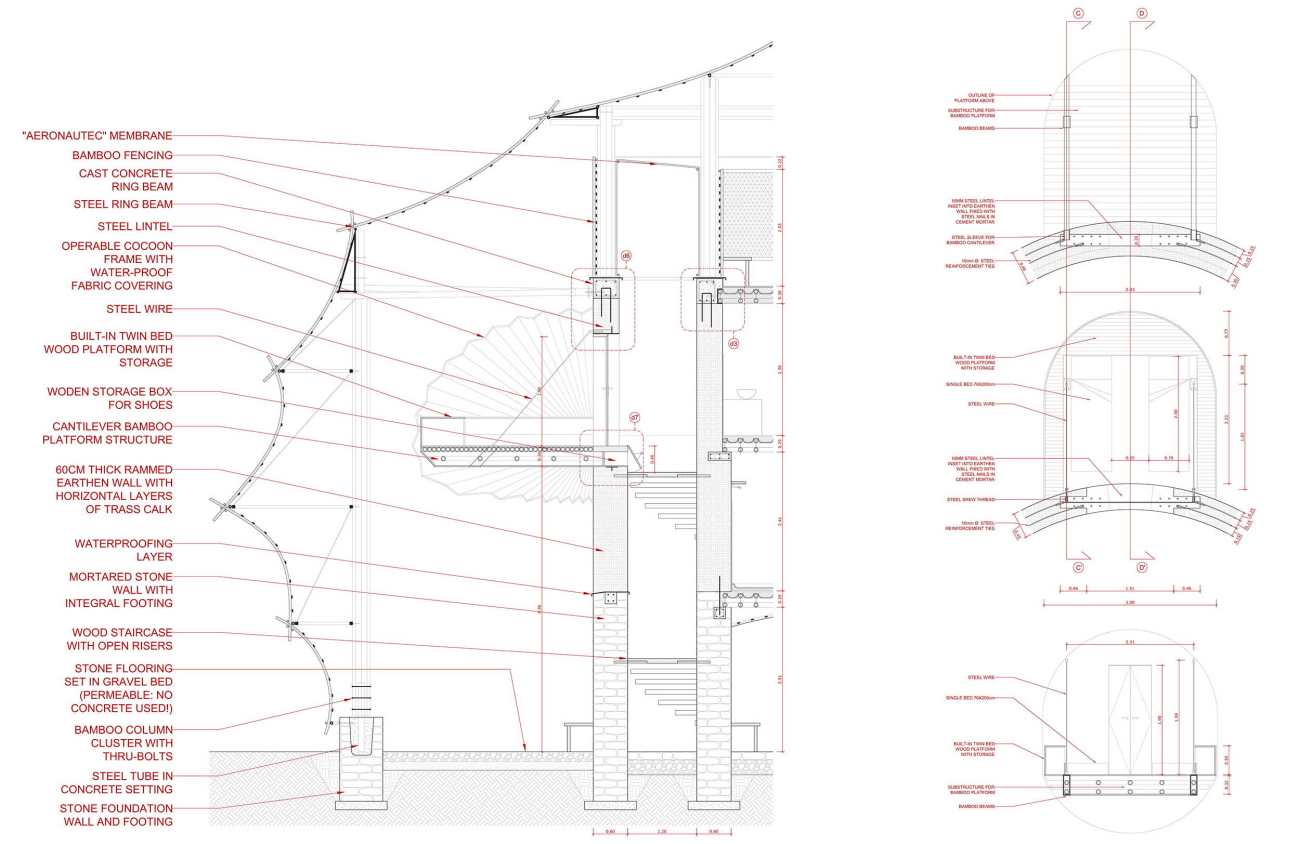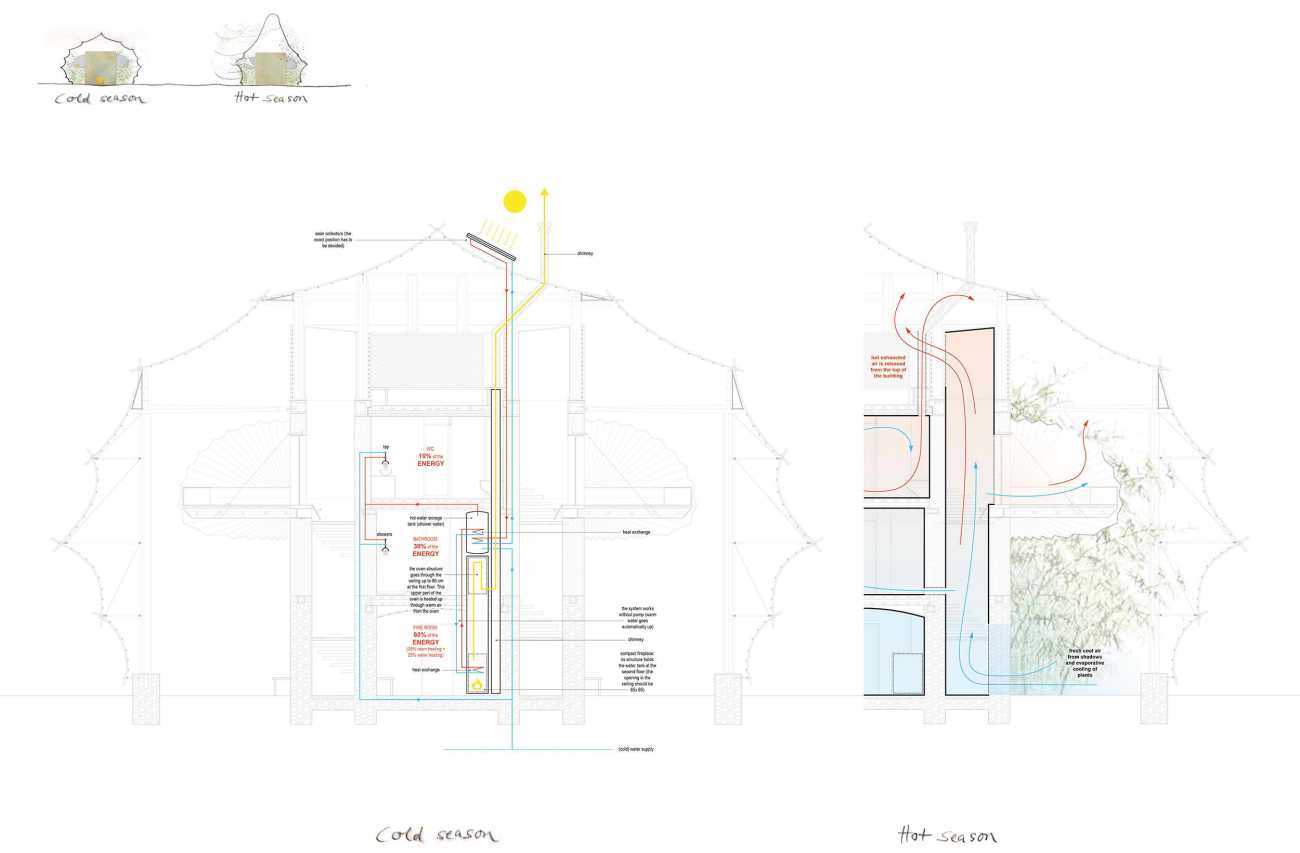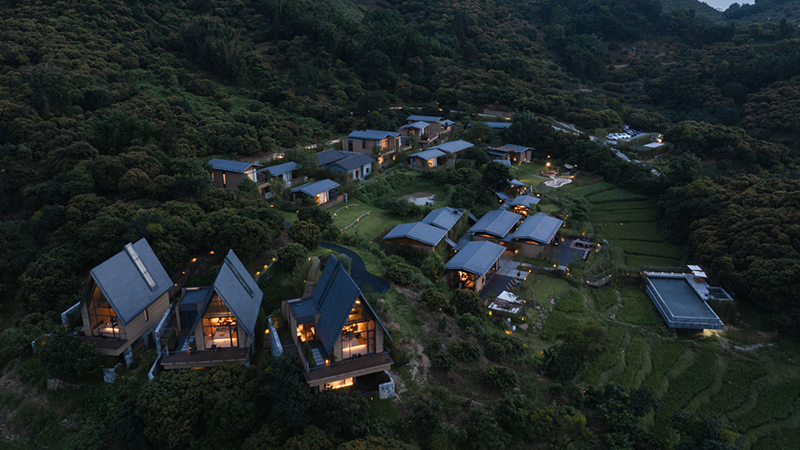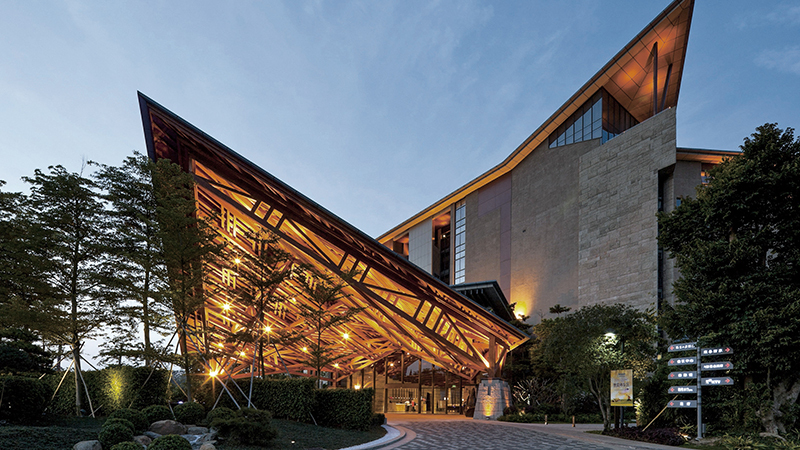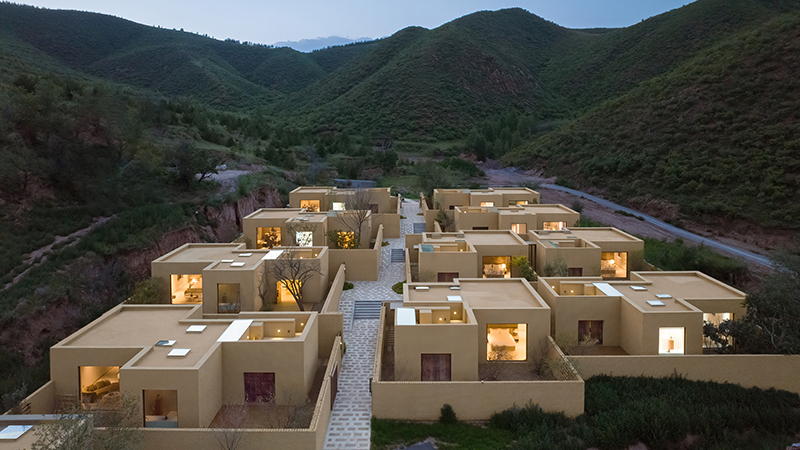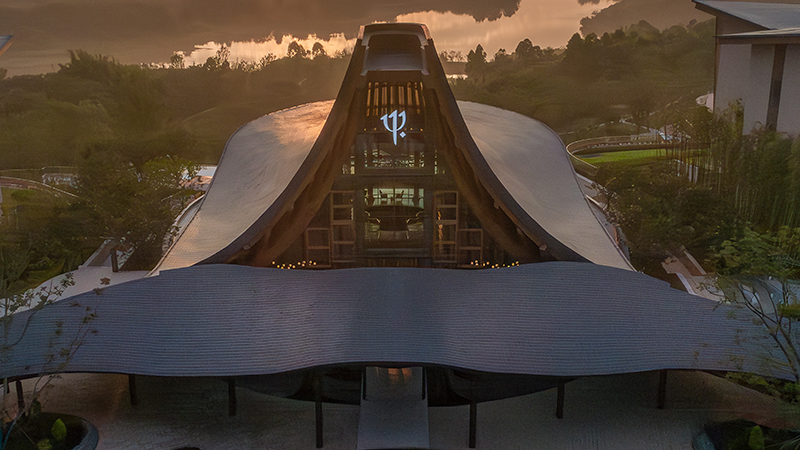| 公司: | Studio Anna Heringer | 类型: | 建筑 |
|---|---|---|---|
| 地区: | 中国 | 标签: | 酒店 |
在2011-2014年的三年内,中国消耗的水泥比美国上个世纪消耗的还要多。现在住在水泥住宅楼里的人,大部分都是住在天然材料的房子里。这种趋势在全世界都在发生。为了减少二氧化碳的排放,需要有替代品。
Within three years (2011-2014) China consumed more cement than the USA during the last century. Most of those people living now in concrete housing blocks were living in houses made of natural materials. This trend happens all over the world. Alternatives are needed to reduce CO2 emissions.
这3个旅店展示了传统的、自然的材料可以用当代的方式来使用:不像许多传统的房子在假立面后面隐藏着混凝土,这个项目赞美了自然材料的美。使用非标准化的当地材料将导致城市和农村地区更加多样化,通过创造就业机会促进公平经济,并保护我们地球的生态系统。
The 3 hostels show that traditional, natural materials can be used in contemporary ways: unlike many traditional houses that hide mud behind fake facades, this project celebrates the beauty of natural materials. Using non-standardized, local materials will lead to more diversity in urban and rural regions, foster fair economics - through the creation of jobs - and preserve our planet`s ecosystem.
这个项目是龙泉国际双年展(Longquan International Biennale)的一部分,该项目寻求用竹子建造,为此邀请了12名建筑师来建造永久性的结构。我们的工作室被委托建造2个招待所和1个宾馆。旅馆的结构是由石头和夯土组成的核心。核心包括所有设施单元和楼梯。与它相连的是睡眠单元。后者的设计就像中国的灯罩,在夜里发出昏暗的光线。在他们的周围是一个富有表现力的竹子编织结构。
This project was part of the Longquan International Biennale that sought to build with bamboo, for which 12 architects were invited to build permanent structures. Our studio was commissioned for 2 hostels and 1 guesthouse. The structure of the hostels is formed out of a core made of stones and rammed earth. The core hosts all facility units and the stairs. Attached to it are the sleeping units. The latter are designed like Chinese lampshades that gloom in the night. Around them is an expressive structure out of woven bamboo.
一般来说,我们倾向于认为可持续性就是稀缺。但自然的本性是无限的。这些伟大的建筑材料竹子和泥是丰富的。从经济和生态的角度来看,它们都是有意义的,对人类和地球都是健康的。这些建筑是一种宣言,可持续性关乎生活质量,是对大自然丰富资源的颂扬。
In general we tend to think that sustainability is about scarcity. But the nature of nature is not limitation. These great building materials bamboo and mud are there in abundance. They make sense in economic as well as ecological perspective, are healthy for people and the planet. These buildings are a statement that sustainability is about quality of life and the celebration of nature`s vast resources.
竹子编织和夯土的应用技术是劳动密集型的,挑战了当地工匠的技能,并把最大的利润份额留给了社区。该项目希望通过竹子的弯曲强度等内在的材料特性,以及编织篮子等中国手工艺的丰富传统,重新连接文化商品的真实性。陶瓷器皿是宝溪的文化特色之一,这些就是这些形状背后的灵感。
The applied techniques bamboo weaving and rammed earth are labour intensive, challenge the skills of local craftsmen and leaving the biggest share of the profit with the community. The project wants to re-connect with the authenticity of cultural goods shaped out of immanent material characteristics like the bending strength of bamboo, and with the rich tradition in craftsmanship of China like basket weaving. One of the cultural identities of Baoxi is ceramic vessels. Those were the inspirations behind the shapes.
能源系统是基于直接的和“古老的”来源,如火、太阳、风、阴影、植物和最小化有条件空间的概念,而不是在资金和资源上花费巨大的精力来控制整个旅馆的气候,只有核心部分掌管杂物间的部分是受温度控制的。它们可以防止雨水的侵蚀,也可以在技术水平非常低的情况下选择加热或冷却。通过一个有效的壁炉,火被用作热源,也为太阳能集热器支持的淋浴加热热水,同时在公共房间中创造交流的氛围。
The energy system is based on direct and ‘archaic’ sources like fire and sun, wind, shade, plants and the concept of minimizing the conditioned spaces. Rather than making a huge effort in both money and resources for controlling the climate of the entire volume of the hostels, only the core - that hosts the utility rooms - and the cocoons are thermally controlled. They are protected from the rain and have heating or cooling options on a very low-tech level. The fire is used as a heating source through an effective oven that also heats warm water for the showers supported by solar collectors, while creating a communicative atmosphere in the common rooms.
 | 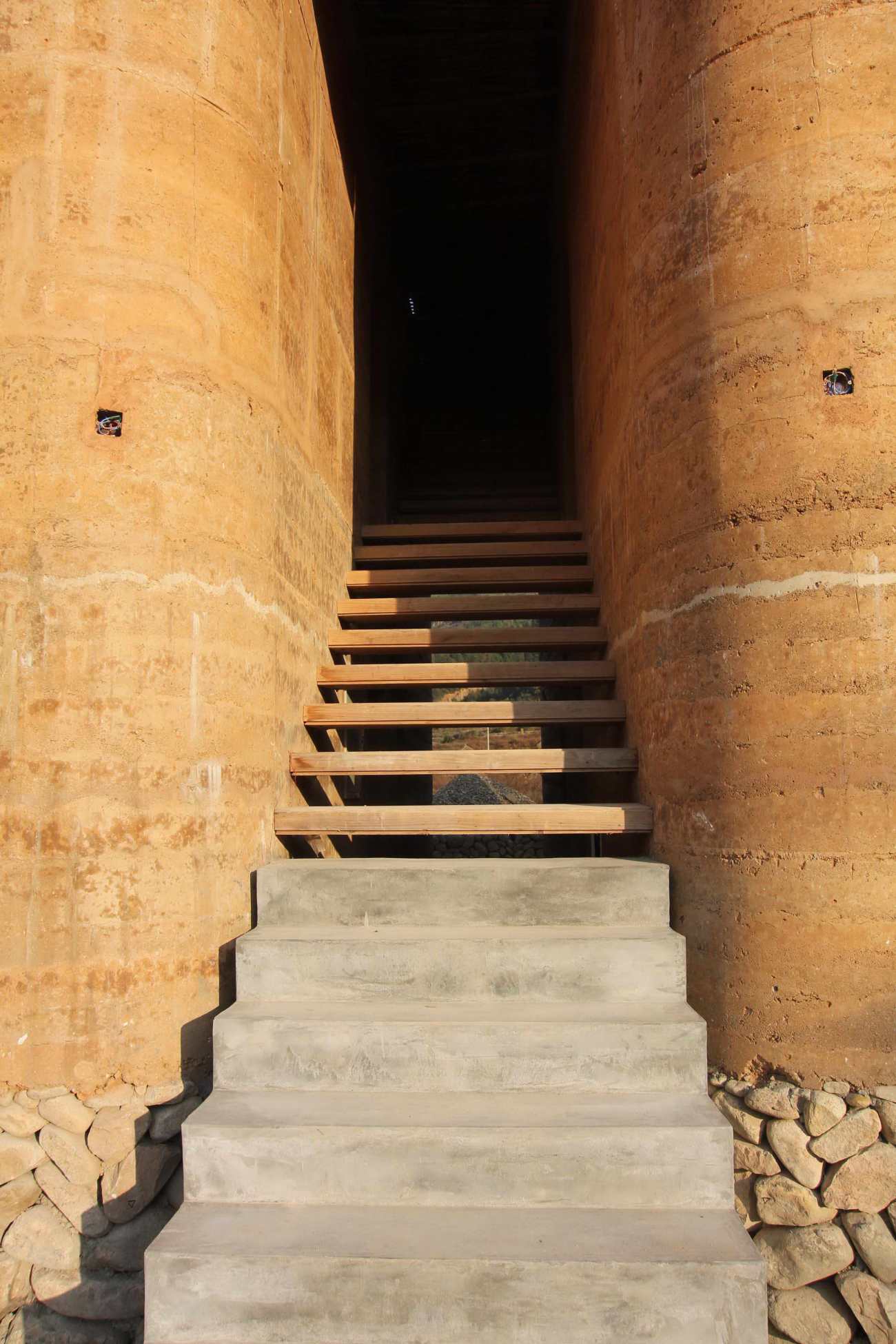 |
以我们地球有限的资源,我们不能只用工业化材料为70亿人提供合适的居住环境。为了实现可持续和公平的发展,天然材料的使用是至关重要的。这个项目可以作为一个典范,简单而有意义的建筑,相信 "迷人的力量",这就是天然材料的真实性。
With our planet`s limited resources we can’t provide 7 billion people an appropriate habitat made of industrialized materials only. The use of natural materials is vital in order to enable a sustainable and fair development. This project can act as a model for building simple but with sense and believing in the ‘charming power’ which lies in the natural materials’ authenticity.
▽场地平面图 Site plan
▽平面/剖面图 Plan & Section
▽立面图 Elevation
▽构造细节 Tecnical drawings
▽气候热量分析 Energy concept
Project name: Bamboo Hostels China
Design Firm: Studio Anna Heringer
Location: Baoxi, region of Longquan, China
Client/Sponsor: Municipality of Longquan, China
Timing: start designing in March 2013; end of construction in October 2016
Gross (external) area: 1153 m2
Total cost: 840000 USD (RMB 5800000)
Concept and design: Anna Heringer
Team Studio Anna Heringer:
Stefano Mori, Karolina Switzer, Wayne Switzer, Yu Xi
Main contractor: Shanghai Kangye Construction & Decoration Co.,Ltd
Consultant in earthen structures and over all concept: Martin Rauch;
Consultant in bamboo structures: Emmanuel Heringer; Consultant in heating
system: Harald Mueller, Franz Petermann; Consultant in energy
system: Prof. Klaus Daniels
Suppliers: local craftsmen
Other: The Longquan International Biennale (LIB), which was launched from the Municipality of Longquan, 500km south of Shanghai. 12 architects were invited to build habitable buildings in a location of cultural and historical importance: Kengo Kuma, George Kunihiro, Keisuke Maeda, Vo Trong Nghia, Madhura Primatilleke, Simon Vélez, Li Xiaodong, WISE architecture Yang Xu and Studio Anna Heringer
更新日期:2020-11-06 14:17:07
非常感谢 Studio Anna Heringer 带来的精彩项目, 查阅更多Appreciations towards Studio Anna Heringer for sharing wonderful work on hhlloo. Click to see more works!
